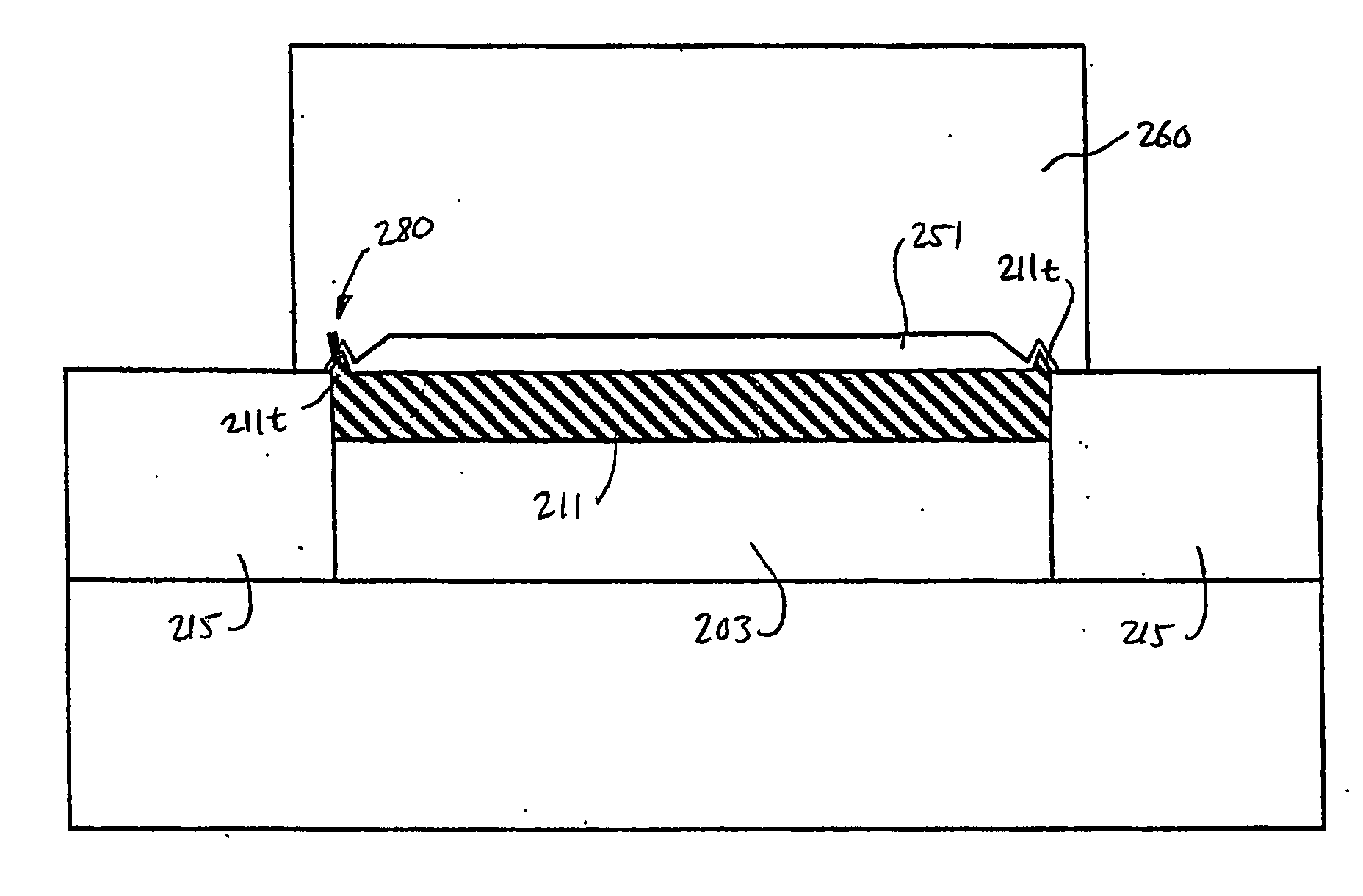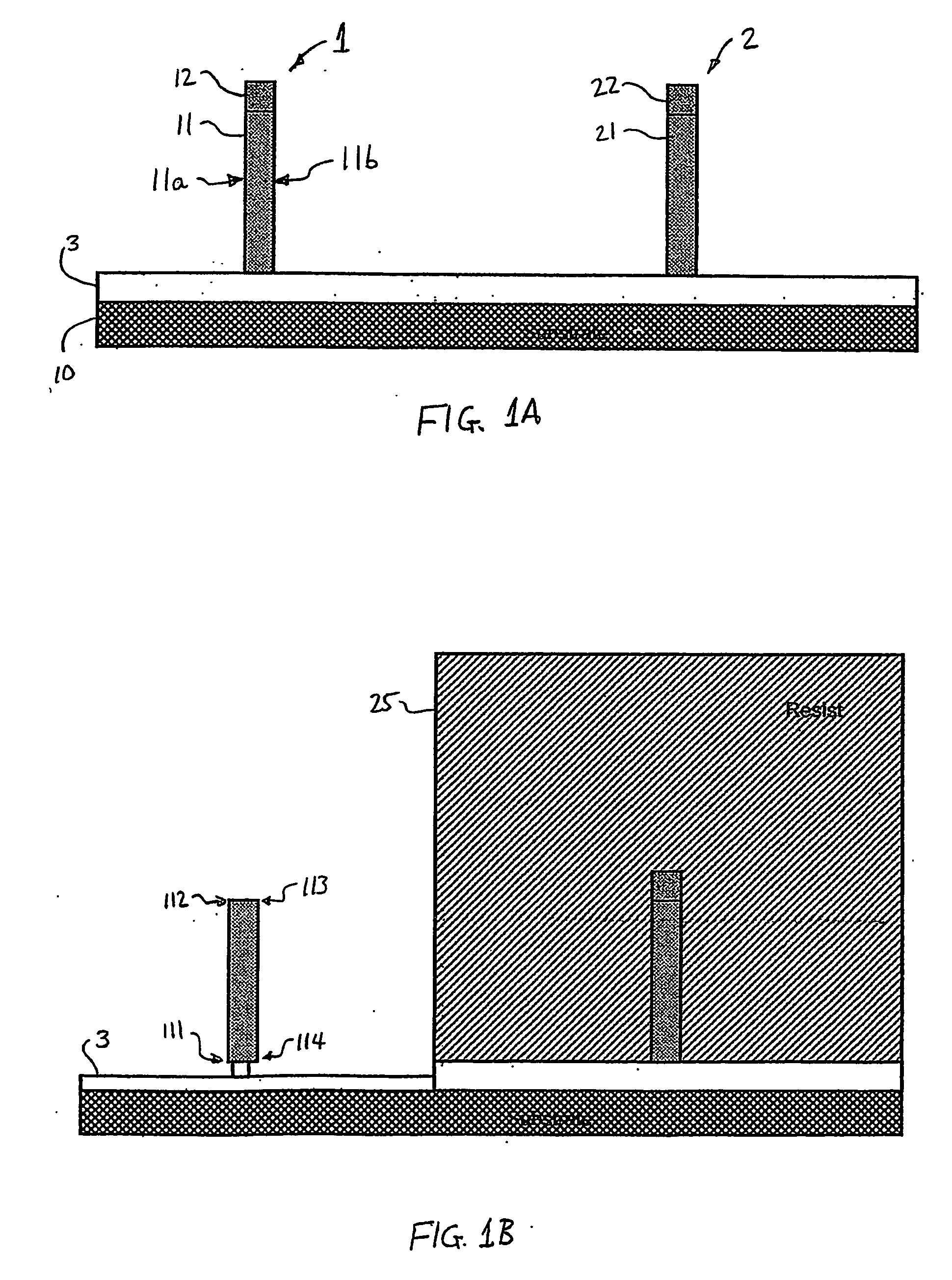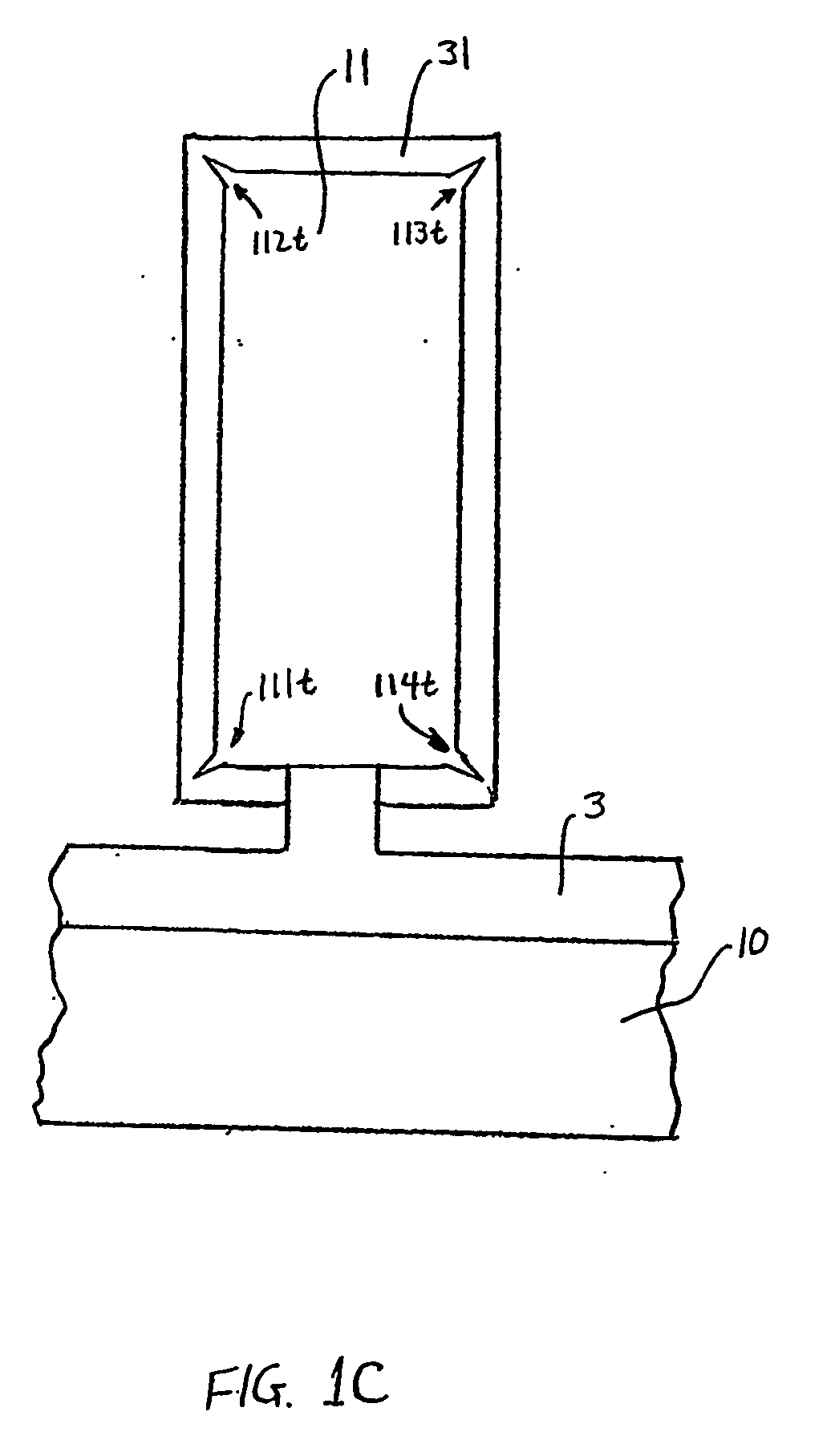Integrated antifuse structure for finfet and cmos devices
a finfet and anti-fuse technology, applied in the direction of basic electric elements, semiconductor devices, electrical equipment, etc., can solve the problems of affecting the quality of the device, affecting the performance of the device, and the appearance of the device is not easy to see,
- Summary
- Abstract
- Description
- Claims
- Application Information
AI Technical Summary
Benefits of technology
Problems solved by technology
Method used
Image
Examples
Embodiment Construction
[0014] In accordance with the present invention, a plurality of antifuses is formed at a semiconducting gate structure by oxidation of exposed corners. This process may be applied to either FINFET or planar CMOS gate structures, as detailed below.
(1) Antifuses for FINFET Devices
[0015]FIG. 1A shows two neighboring silicon fins 11, 21 which may form the bodies of FINFETs after gate electrode processing. In this illustration, one of these (fin 11) is instead made into an antifuse structure. The fin structure 2, which includes fin 21 and hardmask 22, is coated with a protective layer of resist 25; the resist is exposed and developed to uncover fin structure 1. The exposed portion of the BOX layer 3 is then subjected to an isotropic etch which undercuts silicon fin 11 (see FIG. 1B). The hardmask 12 is also removed in this step. It should be noted that the etching and undercutting results in four exposed corners 111-114 on silicon fin 11.
[0016] The silicon surface of fin 11 is then ox...
PUM
 Login to View More
Login to View More Abstract
Description
Claims
Application Information
 Login to View More
Login to View More - R&D
- Intellectual Property
- Life Sciences
- Materials
- Tech Scout
- Unparalleled Data Quality
- Higher Quality Content
- 60% Fewer Hallucinations
Browse by: Latest US Patents, China's latest patents, Technical Efficacy Thesaurus, Application Domain, Technology Topic, Popular Technical Reports.
© 2025 PatSnap. All rights reserved.Legal|Privacy policy|Modern Slavery Act Transparency Statement|Sitemap|About US| Contact US: help@patsnap.com



